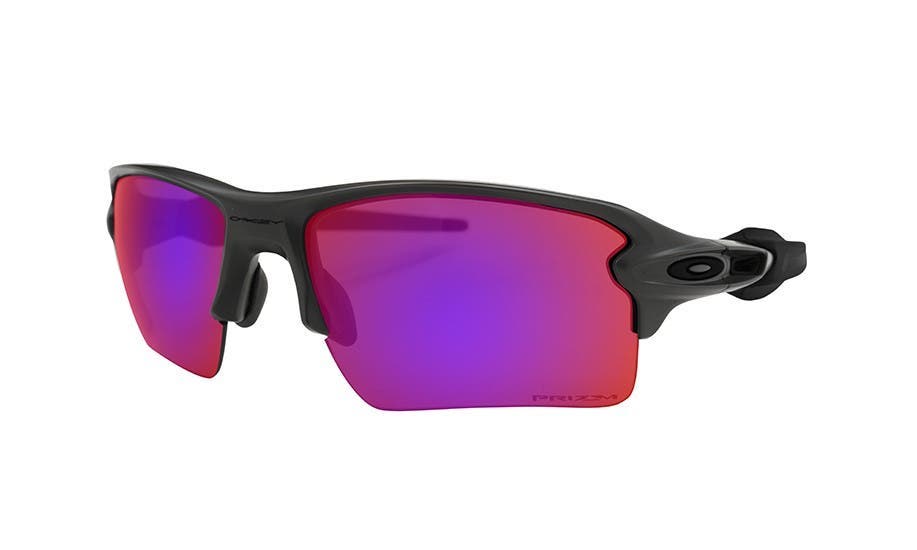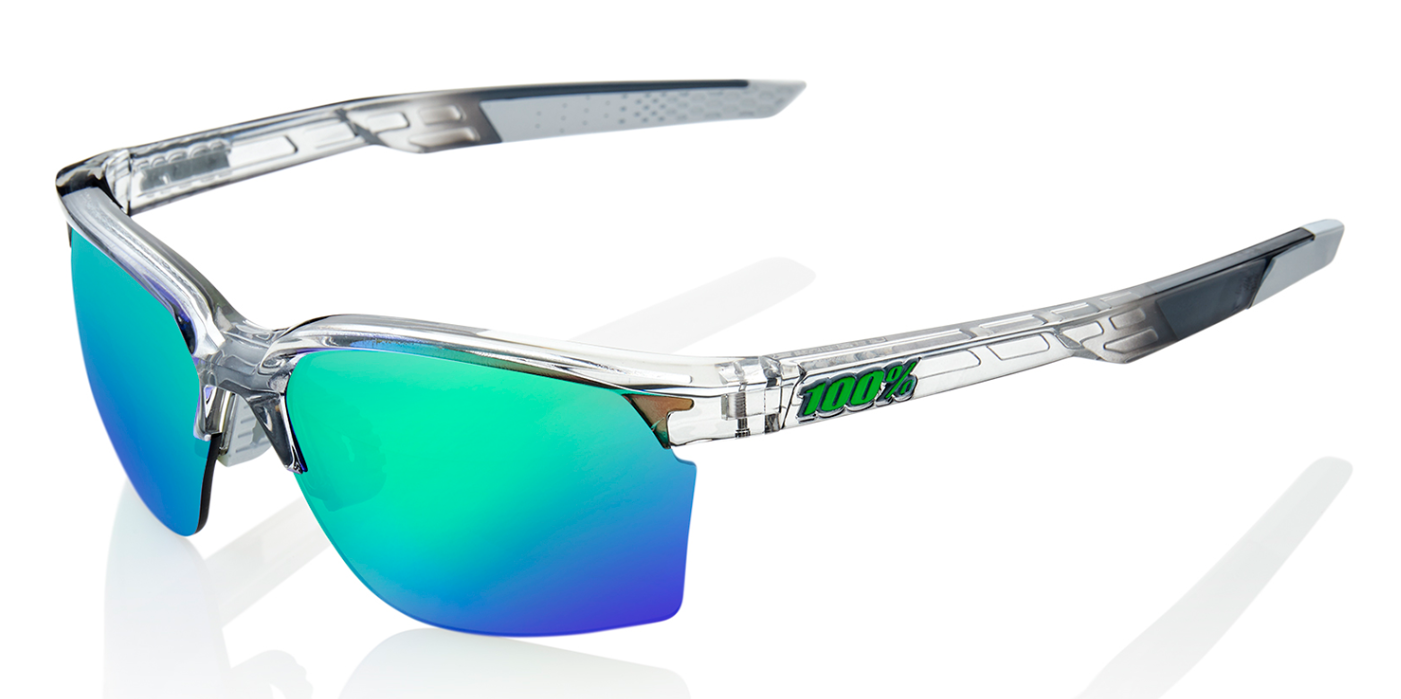Cycling sunglasses are a crucial tool to ensure you experience a seamless ride. When looking for the best pair of cycling sunglasses, it's not always easy knowing where to start, so we've created this buyer's guide to tell you what to look for. Stick around for SportRx's frame and lens recommendations that make all the difference for your biking experience.
Also featured in this guide are a few examples of top cycling sunglasses. For a more complete list, check out our Best Prescription Cycling Sunglasses.
Cycling Sunglasses Buyer's Guide
1. What to Look for in Cycling Sunglasses
2. Frame Technology
2.1. Fit
2.2. Grip
2.3. Coverage
2.4. Weight
3. Lens Technology
3.1. Lens Material
3.2. Contrast Enhancement
3.3. Transitions Lenses
3.4. Polarized vs Non-Polarized
3.5. Progressive vs Non-Progressive
4. Top Cycling Sunglasses
Don't miss Sunglass Rob and pro cyclist Stephane Roch discussing everything you need to know about cycling sunglasses and how to choose the right pair for you.
What to Look for in Cycling Sunglasses
The high volume of designs, styles, and features for cycling sunglasses can be overwhelming. But worry no more! We're here to answer all of your questions with this ultimate buyer's guide to the best cycling sunglasses and prescription cycling glasses.
Frame Technology
A sturdy yet lightweight frame construction separates the good frames from the bad. If you're picking up a new pair of sunglasses for cycling, make sure that they are made of a sports performance material like nylon, built to be tough but light enough not to bog you down.
Fit
Fit is always key for sunglasses, but for cycling you not only have to worry about how the sunglasses are going to fit on your face, but also how they'll fit under your helmet. We find that frames with straight-back temples are your best bet for helmet compatibility. Straight-back temples also allow you to seamlessly remove and replace your frames when needed.
You also don't want your glasses to be too tight and cause discomfort, or be too loose that they're constantly slipping off. Settle for something that fits well on your face and can handle those long rides.
Grip
True cycling glasses will have both temple and nose grips to ensure a secure fit throughout every ride. You can count on these rubber materials to increase grip the more you sweat, keeping your sunglasses in place at all times. Keeping them optically aligned is especially important in prescription cycling sunglasses.
Coverage
The best cycling sunglasses are all about that wrap around frame design. More wrap means more coverage and extended peripherals. That coverage is going to come in handy, you'll see. No, really—you'll see, like, everything. And you'll feel much more protected too.
Wrap around sunglasses also provide ample wind and debris protection. If you have a high prescription, you'll also reap the benefits of wrap around cycling sunglasses designed to accommodate that need, such as with the Rudy Project Exception.
Weight
Think you'll be fine in a pair of heavy shades? Think again. You need to think like a pro, like a swimmer even. Don't let any weight hold you back. The best cycling sunglasses feel like they're not even there!
Lens Technology
When it comes to choosing the perfect lens for your vision and riding needs, there are some features that work better than others, especially when customizing a pair of prescription cycling sunglasses. Here's a little break down of your options and why they may or may not be for you.
Lens Material
Sunglass Rob's #1 tip: Don't wear glass lenses on the bike! Though the cycling trend nowadays leans more toward street fashion, glass lenses are a bad idea for several reasons.
For one thing, they're heavier, and you want lightweight glasses. This goes double if you wear a prescription. Also, in the event that you fall or debris hits your glasses, they're done. The lens will shatter, which poses an additional risk damaging to your eyes.
Glass lenses are great, but save them for your everyday wear. We recommend going for polycarbonate or Trivex lenses instead, as those materials are lighter than glass and shatterproof.
Contrast Enhancement
Now comes the decision of dark vs. light lenses. For cycling, it is always better to go with a light lens. We say this because of the safety issues that can come with having a pair of cycling sunglasses that are too dark.
When riding, you're surrounded by grey from the ground, shadows, pot holes, and debris. Dark grey lenses may cause you to miss those obstacles and affect your reaction time. Lighter lenses (such as rose and copper) provide enhanced contrast, allowing you to spot uneven road surfaces up ahead. As a result, a lighter lens (with 100% UV protection) is the way to go.
Transitions (Photochromic) Lenses
Transitions lenses automatically adjust with the changing light throughout your bike ride, and typically come in grey or brown. The SportRx Sunset Lens provides a brown-based photochromic lens, which changes from a medium rose copper to a dark rose copper, creating a lens that can work in any daytime condition.
Sunglass Rob notes that a grey Transitions lens is better than a dark grey lens because it can change tint. You'll still get less contrast compared to other tints, but it's not as dangerous as wearing a regular dark grey lens on an overcast day.
Interchangeable lenses are also a great feature to have. Get one frame and multiple sets of lenses to cover all your bases.
Polarized vs Non-Polarized
Simply put, polarized lenses cut out glare. This feature makes for a good lens when you are in bright conditions where the reflected glare can strain your eyes. Polarized lenses are recommended for water activities and driving, but are not ideal for road cycling because there are situations in which seeing glare can be a benefit. For example, picking up on an oil slick or pot hole would be harder with a polarized lens, since it can throw off your depth perception.
Sunglass Rob also notes that bike computers these days tend to work well with polarized lenses. So while that may have been an issue in the past, it's not as much of a factor now.
In the end, getting a polarized lens is up to your personal preference. If you prefer not to have the interference of glare, that's totally cool! Just know that most cycling lenses (such as PRIZM Road) aren't polarized. We also have more information on the differences between polarized and non-polarized cycling glasses.
Progressive vs Non-Progressive
A progressive lens is recommended if you struggle with focusing on things up close and need to read maps, digital readouts, or fix a flat tire on your bike. Otherwise, a single vision lens is best because you have one type of vision correction across the entire lens rather than having the lens split between near, intermediate, and far distances.
If you're used to progressive lenses and like them, go for it! Otherwise, we usually recommend a single vision lens. If you think you'll need to stop and fix something on your bike or read a map, bring a pair of readers in your bag.
Top Cycling Sunglasses
This list of cycling sunglasses contains all of the features we mentioned above. But it's only part of the recommendations we have. For even more options, check out our Best Men's Cycling Sunglasses.
Oakley Flak 2.0 XL
The Oakley Flak 2.0 XL are tried and true sport sunglasses that are perfect for cycling. The semi-rimless frame design allows the lenses to extend downward to give you additional coverage without the bottom of the frame getting in your line of sight. Unobtainium, Oakley's patented grip material, covers the nose pads and temples to keep the frames optically aligned. And like many Oakley sunglasses, this model is offered in PRIZM Road for maximum contrast so you can pick up on every detail.

Oakley Flak 2.0 XL in Matte Carbon with PRIZM Road Lenses
Shop Oakley Flak 2.0 XL
Key Oakley Flak 2.0 XL Features:
- Wrapped frame for extra coverage & a secure fit
- Lightweight & durable O Matter frame
- Comfortable Unobtainium earsocks & nose pads
- PRIZM lens technology for vibrant color & contrast
- Prescription ready!
100% Sportcoupe
Trendy and sleek — that's the 100% Sportcoupe for you! You may have seen 100% cycling glasses in the Tour de France lately, seeing as they're popular among top cyclists like Peter Sagan.

100% Sportcoupe in Shiny Translucent Crystal Grey with Green Multilayer Mirror Lenses
Shop 100% Sportcoupe
Key 100% Sportcoupe Features:
- Lightweight & durable TR-90 frame
- HiPER lens technology for vibrant color & contrast
- Ultra-grip rubber nose pads and temple tips keep these secure on long rides
- Prescription-ready with SportRx lenses
Prescription Cycling Sunglasses at SportRx
Need prescription cycling sunglasses? Done. When you shop with us, you’ll find video guides and tooltips throughout the build process as you customize the perfect pair. An answer to all your questions is at your fingertips, and if you want to chat with an expert, Contact Us. We’ll put you in touch with one of our friendly in-house opticians who can help you build your prescription cycling sunglasses.
Ditch risky online shopping with the See Better Guarantee. Try your sunglasses for 45 days. If you’re not satisfied, send them back. Get a full refund, exchange, or credit towards a better pair. And return shipping? Covered. Get your pair of prescription cycling sunglasses at SportRx today!




